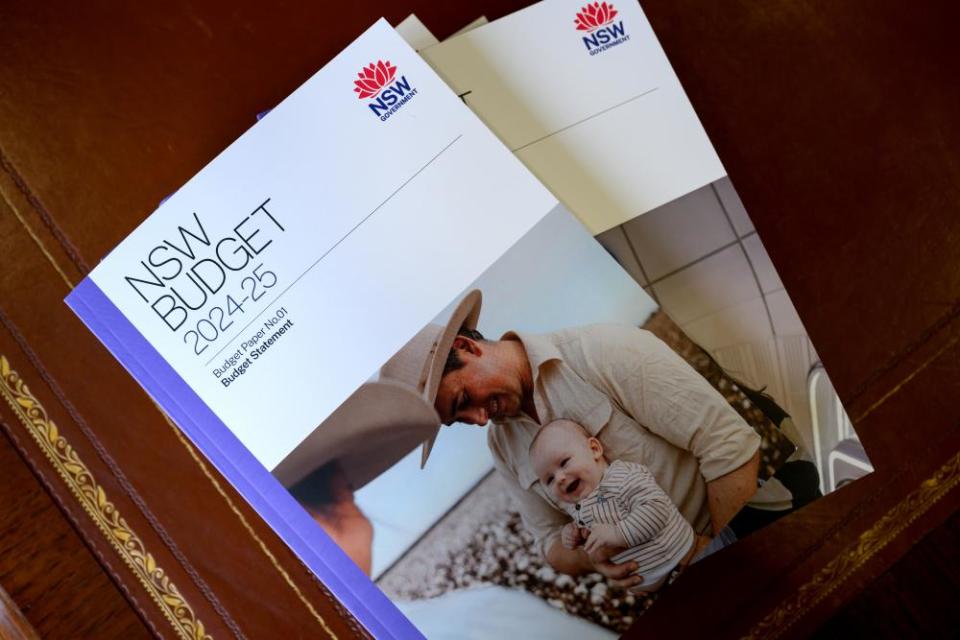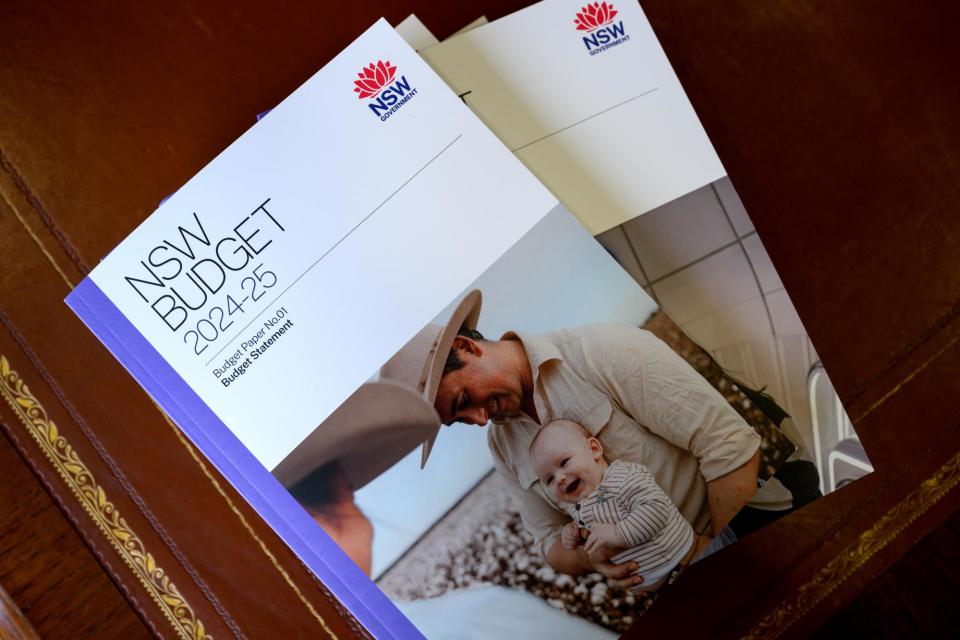NSW budget 2024: the biggest winners and losers
The New South Wales government has unveiled a bold plan to ease costs for GP clinics in order to nudge doctors into bulk billing more patients, as part of a suite of budget measures it hopes will deliver cost-of-living relief to citizens.
However, in announcing a $3.6bn deficit, the Minns government’s budget of “must-haves not nice-to-haves” leaves a raft of key societal issues without new funding or a clear path to improvement.
Here’s Guardian Australia’s breakdown of who wins and who loses from the 2024-25 NSW budget.
Winners
Bulk-billing GPs
One of the budget’s flagship policies is to spend $189m over four years on healthcare to reduce the cost of running a GP clinic in an effort to allow them to bulk bill more patients, delivered through changes to how payroll tax works.
In Tuesday’s budget, the NSW government announced it will waive all historical payroll tax liabilities for GP clinics, at a cost of $104m.
Additionally, the government will provide an ongoing payroll tax rebate for wages paid to contracted doctors to clinics in Sydney who bulk bill more than 80% of patients, providing an incentive to clinics offer bulk billing to more people. The threshold will be lower for clinics in the rest of NSW, at 70%.
Related: NSW state budget 2024: 30,000 new homes pledged amid ‘unprecedented intervention in housing market’
Of course, actual bulk-billing rebates for patients are determined and paid by the federal government, but this NSW policy has been welcomed by medical groups including the Australian Medical Association, who have said it will help struggling practices stay open.
Housing for vulnerable people, low income earners and key workers
The Minns government has announced a large spending agenda to boost social housing stock, improve the quality of existing homes for the state’s vulnerable, and help the private sector ramp up building and push local councils into achieve housing targets.
In terms of public housing, the government has announced $5.1bn to build 8,400 new homes, which will be owned by the state body Homes NSW. At least half of the homes will be prioritised for victims of family violence.
The state will also spend $1bn to repair 33,500 existing homes across the state’s public and social housing mix. About $200m of this $1bn spend will be for stock managed by the Aboriginal Housing Office.
Housing for essential workers will also be boosted, with $650m allocated for build-to-rent programs and rural and regional accommodation for key workers.
The new initiatives come on top of announcements to audit publicly owned under-utilised land to identify additional plots, including in already built-up suburbs, that can be devoted to building 21,000 new homes.
Spending to make the planning approvals process more efficient, as well as the controversial transport oriented development policy to increase zoning for higher density around rail stations, have also previously been announced, as the state’s completion rate of home building reaches near-record lows.
Coal powered energy producers
The budget has revealed the cost of a policy designed to respond to the energy price rise resulting from the Russian invasion of Ukraine that capped the price of black coal at $125 a tonne, while allowing producers to sell for whatever price they could on the market. In the 18 months to the end of June, this has cost the NSW and federal governments $884m. In the 2023-24 financial year alone, this cost the two governments $588m.
Origin Energy, which had limited long-term coal contracts compared with some rivals, stands to be a major beneficiary of the policy, on top of the already announced news that the life of its Eraring coal fired power plant would be extended and underwritten by the state.
Hospitals
In addition to the relief the GP bulk billing policy is designed to deliver – NSW Health estimates that a 1% decrease in bulk billing equates to about 3,000 additional emergency room presentations – the government has announced $481m in spending to help hospital emergency departments under pressure, including through more staff.
Frontline public sector staff
If you’re lucky enough to survive a cut to public sector staff headcount as well as a reduction to consultant and contractor use, the government is set to increase wages for more than 400,000 public sector workers by an average of 10.5% over the next three years.
Losers
Average income renters
Given advertised rents rising more than 24% in the last two years – a challenge prominently identified in the budget papers – there’s little in this budget for the average income renter who doesn’t qualify for rent-assistance schemes and whose prospects of home ownership are distant.
All of the government’s housing policies are either targeted to society’s most vulnerable, or will deliver homes to the market’s housing stock that are years away.
The NSW government is yet to follow through on its election commitment to ban no-fault evictions in the state, an issue long identified by tenants’ advocates as adding to a power dynamic that unfairly advantages landlords in a market where rental vacancies are at historical lows of about 1%.
Highly paid public sector employees
To deliver the abovementioned pay rises for frontline workers employed by the state, the government will seek to limit wage rises for top-level managers and those on the most exorbitant salaries.
Land owners of multiple properties
Changes to land tax indexation and settings will see owners ultimately pay more tax for second and multiple properties in the long run.
Foreigners who own investment properties
Also losing out from this budget are those who pay the foreign owner land tax surcharge, which will increase from 4% to 5% from the 2025 land tax year onwards. The foreign purchaser duty surcharge will also increase from 8% to 9% from 1 January 2025. These measures will milk out an extra $187.5m from foreign property investors over the next four years.
The environment
Despite labelling sustainability as a key measure in its wellbeing index to measure progress, there are scant announcements in this budget that address long-running environmental concerns in the state.
The $2.4bn spend on environment and heritage initiatives is the same as the previous year, representing a slight cut when considering inflation.
Within the environment spend there are some new measures, including $43m allocated for waste and recycling projects as the state runs out of landfill by the next decade, along with $75m for national park maintenance and various other grants.
• This article was amended on 18 June 2024. A previous version incorrectly reported the total cost of the coal price cap as $884m, with the federal government matching the contribution. The NSW government later clarified that sum covered both state and federal costs.

 Yahoo News
Yahoo News 

